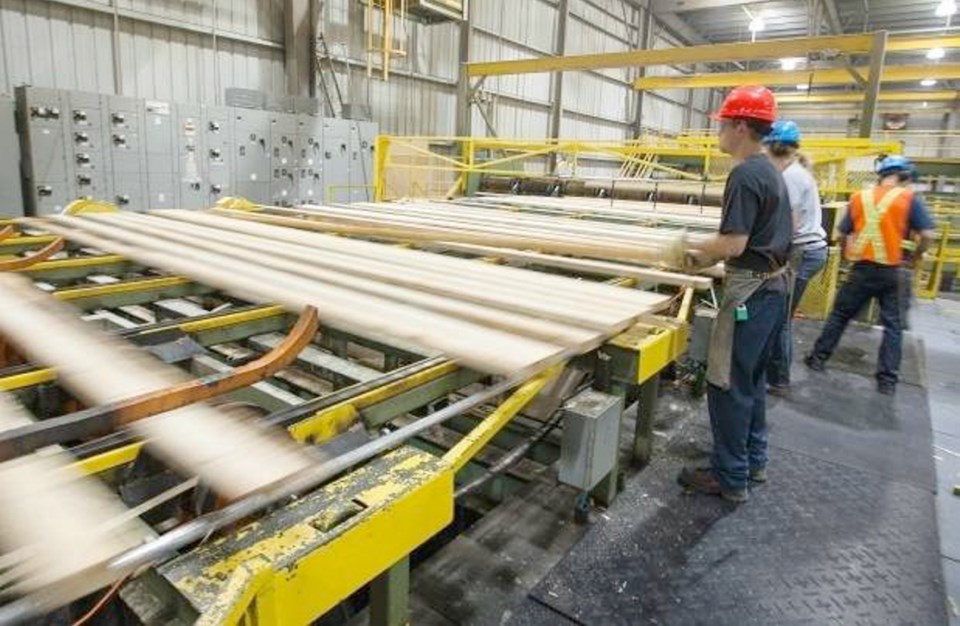A decade after billions of mountain pine beetles chewed their way through British Columbia's lodgepole pine forest, the Interior timber supply has begun a dramatic drop.
“These cut reductions are starting to happen, and they are going to be real,” Albert Nussbaum, director of forest analysis and inventory for the B.C. Ministry of Forests, Lands and Natural Resource Operations, told a Jan. 19 forestry conference in Vancouver, Washington.
Mapping the Course focused on major North American forestry issues expected in 2017.
Nussbaum’s talk to the American and Canadian delegates laid out the severity of the mountain pine beetle infestation in hard numbers that can be expected to translate into mill closures and community disruptions. He said the beetle killed 54 per cent of the merchantable pine that was to be harvested. But in some areas, specifically the central Interior, 80 to 90 per cent of the merchantable pine was killed.
“That’s where the impact is going to be felt more significantly,” Nussbaum said in a later interview.
The beetle infestation peaked in 2004, and Nussbaum said the good news is that beetle populations are now down to near-normal levels. Forest companies have been salvaging that dead timber, but he said the pace of salvage operations is beginning to slow down. With the decline in the availability of dead timber, the province's chief forester is now dropping the sustainable harvest rate, called the allowable annual cut (AAC), to reflect this new reality of the Interior forest. Base-case numbers for one of the hardest-hit timber supply areas, Quesnel, show annual AAC dropping to 1.6 million cubic metres from four million cubic metres. It will be up to the chief forester to determine how that happens and over what time period.
The decline has been expected for years, but it was always somewhere in the future, Hakan Ekstrom, of the Seattle forestry consulting firm Wood Resources International, said in an interview.
“Now it is actually going to happen,” said Ekstrom, whose firm is one of the event sponsors. “More sawmills will be shut down in British Columbia. The question is, will it be three, four, five or six sawmills? And will it be in the next three, four or five years?”
In four of the seven hardest-hit timber supply areas, B.C. chief forester Diane Nicholls has already reduced the AAC. The most recent, the Merritt Timber Supply Area, was announced in March 2016. The annual harvest was dropped to 1.5 million from 2.4 million cubic metres and will drop again in 2021 to 1.2 million. The economic fallout was felt immediately. In September, Tolko Industries announced it was shutting down its Nicola Valley sawmill, which employed 203 people. The mill’s last day was December 16.
Nussbaum said the chief forester is expected to announce three more reductions in 2017: Quesnel in February-March, Prince George in May-June and Lakes, west of Prince George, in late 2017.
During the beetle infestation, B.C. increased its annual timber harvest to encourage forest companies to salvage dead pine, but the temporary harvest uplifts are now ending. The provincial AAC is hovering around 72.5 million cubic metres a year, roughly where it was before the salvage uplifts. Nussbaum expects 2017 to be the year when it moves below that level.
The decline in the B.C. timber supply was one of only two major clouds on an otherwise sunny forecast for the forest products sector in 2017. The sunny side is that U.S. housing starts are steadily climbing and the Chinese lumber market remains reasonably sound, which is positive for Canadian exporters.
The second cloud in the forecast, however, is the softwood lumber dispute, which is causing uncertainty on both sides of the border.
“The focus of the conference is to look forward, and probably the biggest issue is the lumber dispute and what will come out of it,” Ekstrom said. “Whether you are on the U.S. side or the Canadian side, that issue will determine how good this year will be. The more restrictions, the more difficult it will be for Canadian exporters to sell into the U.S. market, but the better it will be for the U.S. sawmills. And vice versa. If there is not a dramatic change in how Canadians can sell lumber into the U.S., it will have less impact on U.S. sawmills, so it’s a big issue to American mills as well.”
Nussbaum said the lumber dispute worsens the economic impact of the timber supply forecasts, because duties or quotas could devalue the remaining salvage wood.



